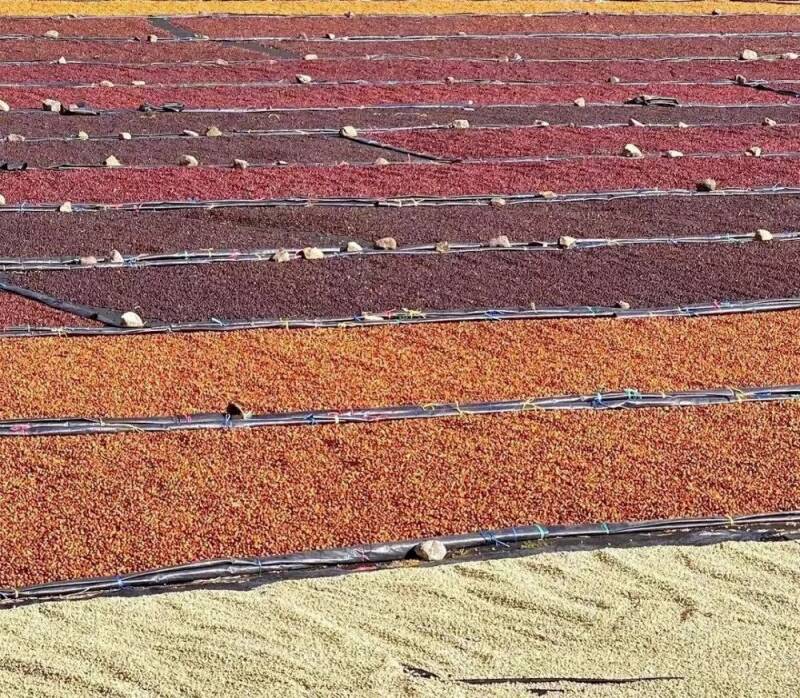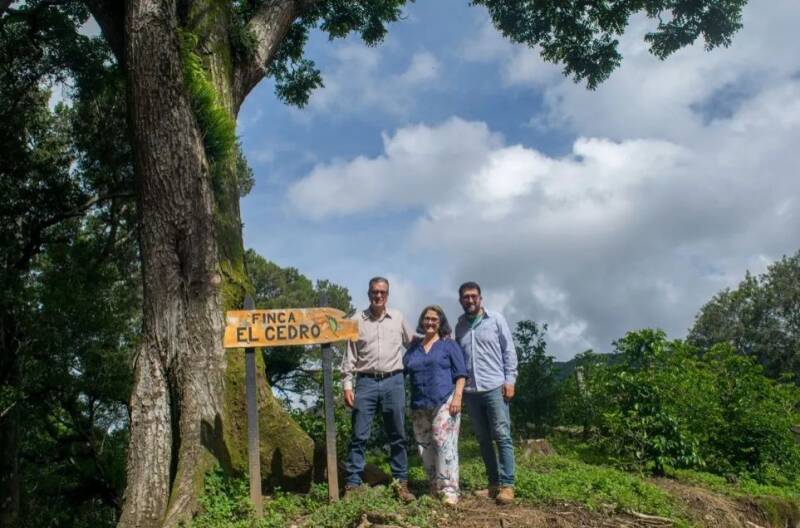What well-known estates are there in the Tarazhu region of Costa Rica? What are the characteristics?
With the continuous development of the coffee industry, coffee processing methods emerge one after another, but at present, the most common treatments in the market are still washing, sun exposure and honey treatment. When it comes to honey treatment, everyone will think of Costa Rica, because the name honey treatment first spread from Costa Rica.

Costa Rica is a Central American country and the first country in Central America to start growing coffee because of its commercial value. Costa Rica is rich in natural resources, high-altitude mountains, volcanic soil, adequate sunshine and appropriate rainfall. It is very suitable for coffee cultivation, and the coffee beans produced in the country were once called "golden beans" by British aristocrats.
Therefore, there are many well-known coffee farms in the country, such as Stonehenge Manor (Finca Las Piedra), Blue Volcano Manor (Volcan Azul) and so on. In addition, a number of coffee farms in Costa Rica have come to the fore in recent years, such as El Cedro.

El Cedro is owned by Johel Monge Naranjo, which founded the Hacienda San Isidro Labrador company and processing plant with his son Matias nine years ago and is now a family business. Cedar Manor is its coffee estate, both located in Costa Rica's famous Tarazu region (Tarrazu).
Costa Rica is run through the central part by the Cordillera mountains, which separates the east and west sides. The Cordillera Mountain system is the longest folded mountain system in the world, which is composed of a series of parallel mountains, intermountain plateaus and basins, and is an important part of the circum-Pacific volcanic seismic belt. As a result, the mountain system makes Costa Rica rich in natural resources, and the seven coffee-producing areas in Costa Rica are located in the mountains in the middle of the country.
The largest and most famous coffee producing area in Costa Rica is Tarrazu, which is located in the volcanic area, with humid climate and volcanic soil, abundant rainfall throughout the year, mountains and national parks, and dense forest shade. It can be said that coffee growth provides a unique planting environment.
Tarrazu, which belongs to the southeastern province of San Jose, has a long history of coffee cultivation, including the towns of Tarrazu and Dotta Dotta. The Costa Rican government attaches great importance to the coffee industry in this area. In 2019, the Costa Rican government registered "Caf é de Tarraz ú" as a coffee origin certification with the European Union and the World intellectual property Organization (WIPO). This well-known producing area is also included in the series of coffee rations and beans in Street Front Street. This entry-level selection of Tarazhu coffee beans is made in Catuai and Kaddura varieties, washed with water and grade SHB, boiled with slightly sour, orange, nutty and honey flavors.
Cedar Manor (El Cedro) is located in the Tarazhu producing area, near the town of Dotta Dotta, with an altitude of 1950 meters above sea level. The higher altitude and the temperature difference between day and night can make the coffee grow longer and have a richer flavor. And close to the famous Rusk Charles National Park (Parque Nacional Los Quetzales), which is a bird-watching attraction, cloud forests generated by different microclimates and high elevations, and many rivers, so Cedar Manor is also affected by the environment to produce high-quality coffee beans.
In addition, Cedar Manor has been focused on growing and producing boutique coffee, attaching great importance to coffee quality, strict technical management and ensuring the traceability of coffee, mainly planting Geisha varieties. As a result, Cedar Manor participated in the Costa Rican Excellence Cup COE competition many times, ranked in the top 10 many times, and won the first place in the Excellence Cup COE in 2017, 2019 and 2023.
In addition, the cedar manor has repeatedly used honey treatment to obtain the ranking, which shows the importance of honey treatment to the cedar manor and Costa Rican coffee industry. At first, Costa Rica has many mountains and mountains, although it is rich in rainfall, it is difficult to store water, it is also difficult to support water-consuming washing treatment, and it is not like African countries to have a long period of light, and there is a greater risk of sun treatment. So go to learn from the Brazilian half-sun, half-sun is to peel off the pericarp, rinse with water for 1 hour, and then spread out for sun drying. Costa Rica improved according to its own situation, and then evolved into honey treatment.
The improved honey processing method is to first peel off the peel and part of the pectin of the coffee berries and use a peel removal machine to ensure high precision. Precise control of the thin thickness of pectin, then dripping non-stick directly on the high drying rack to dry. And subdivided out of black honey, red honey, yellow honey, white honey is by distinguishing the degree of retention of pectin corresponding to different colors.
For more information about coffee producing areas, please scan the code directly and follow: coffee comments.
Long press the QR code to follow:
Important Notice :
前街咖啡 FrontStreet Coffee has moved to new addredd:
FrontStreet Coffee Address: 315,Donghua East Road,GuangZhou
Tel:020 38364473
- Prev

Be vigilant! Tims employees trick customers into applying for credit cards!
▲ Click to pay attention| Daily Boutique Coffee Culture Magazine Coffee Factory Recently, a netizen who works and lives in Toronto posted that he was deceived by a clerk at a local Tims store and almost applied for a credit card that he didn't need. The poster said that he had recently suffered from a crime in order to consume gift cards given by friends
- Next

Conflict continues to break out in Ethiopia! War spreads to western production areas
According to Ethiopian media reports, serious kidnappings occurred again in Oromia State recently. This time, a total of 44 people were kidnapped by "Shene" militants in Assela town and nearby areas in Oromia State, about 167 kilometers south of the capital Addis Ababa. It is understood that Ben
Related
- Can artificial hand brewing replace the barista's real hand brewing coffee? What is the difference between making coffee with fake hands and making coffee with real hands?
- Can't sell it?! Coca-Cola gives up selling Costa!
- The brewing parameters of the world's top rose summer coffee, ratio, water temperature, grinding and sharing! Graphic teaching on Emerald Manor Rose Summer Brewing Method!
- Jasmine milk tea, a new cup of ice?! Netizen: Why don't you just sell ice cubes
- Is it necessary to buy a cloth powder for an espresso machine? Why should we evenly distribute the powder when extracting espresso?
- What is the grinding ratio, water temperature and powder amount needed to make Combo in Mocha pot coffee? Mocha pot is suitable for making coffee deep and light baked beans??
- Caught off guard! Starbucks '15-year-old store quietly closes!
- Naixue Drink drank a stone and claimed a claim was retaliated by the merchant?!
- What is the difference between a cake filter cup and a V60 conical filter cup? What are the advantages and disadvantages of the flat-bottomed filter cup brewing solution?
- What is the difference between fine coffee powder and medium coarse coffee powder? Do I need to sift out the fine coffee powder for making coffee by hand?

